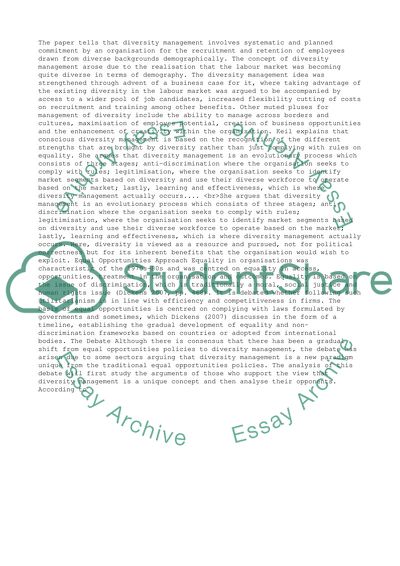Cite this document
(“Diversity Management: Is It Different From Equal Opportunities Policy Essay”, n.d.)
Retrieved de https://studentshare.org/management/1392446-diversity-management-is-it-really-different-from-equal-opportunities-policy
Retrieved de https://studentshare.org/management/1392446-diversity-management-is-it-really-different-from-equal-opportunities-policy
(Diversity Management: Is It Different From Equal Opportunities Policy Essay)
https://studentshare.org/management/1392446-diversity-management-is-it-really-different-from-equal-opportunities-policy.
https://studentshare.org/management/1392446-diversity-management-is-it-really-different-from-equal-opportunities-policy.
“Diversity Management: Is It Different From Equal Opportunities Policy Essay”, n.d. https://studentshare.org/management/1392446-diversity-management-is-it-really-different-from-equal-opportunities-policy.


